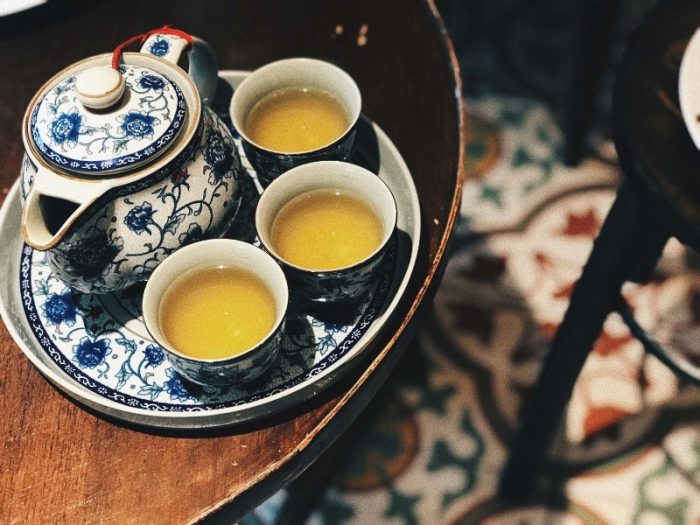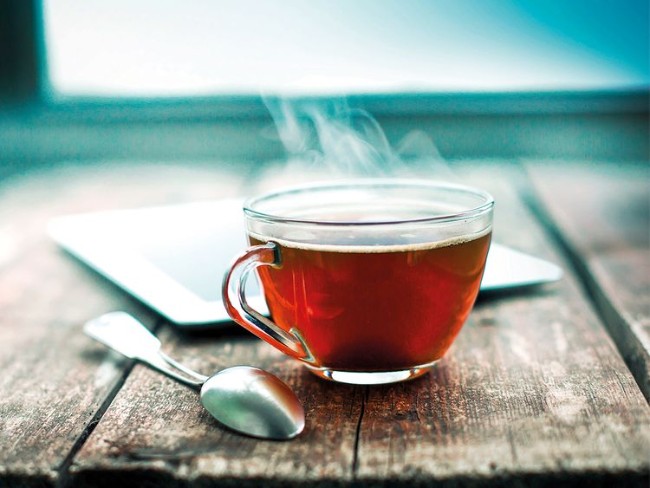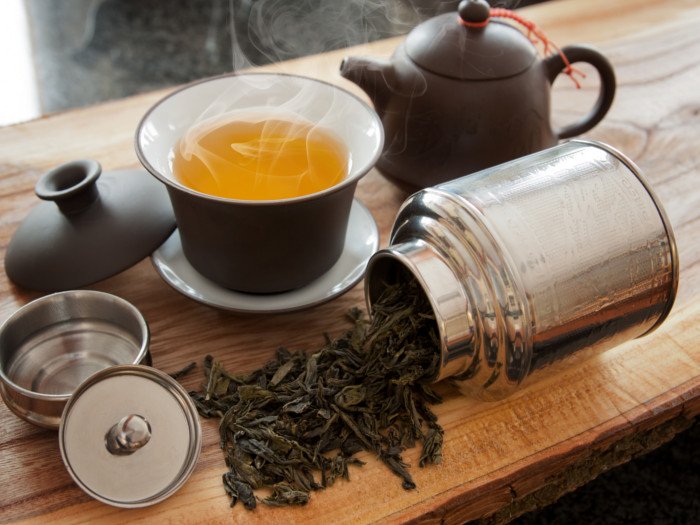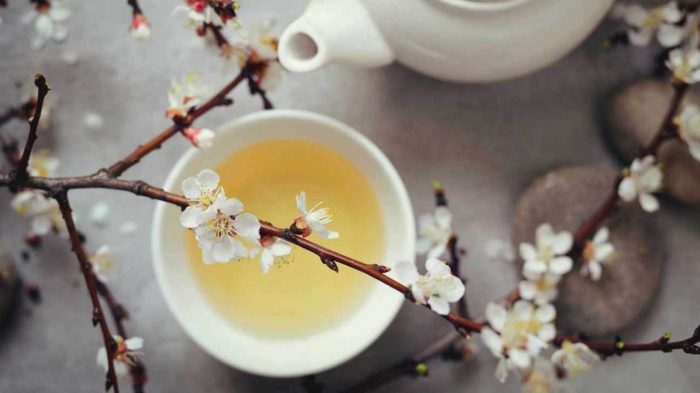If you’re new to the world of tea, it can be hard to remember the endless varieties available. But what you may not know is that all tea is made from the leaves of a specific plant called the Camellia sinensis.
So if most tea comes from the same plant, you may be wondering what differentiates one type from another. But while they do come from the same source, they are not made using the same processes. If you’re having trouble telling them apart, read on to learn the five most common types of tea you’ll likely encounter:
1. Green Tea

Green tea leaves are heat-treated via firing or steaming shortly after picking. This keeps the oils in the leaves from reacting too much with the air and oxidising. This also lets the leaves keep their green hue. Depending on how it’s processed, a sample of green tea’s flavour profile can range from mild and sweet to vegetal or smoky. But generally speaking, it is usually milder than black tea.
Green tea is rich in antioxidants which can reduce the risk of developing high blood pressure. It also contains caffeine that can help boost your metabolism and mental awareness.
Though it is prepared in a few different ways, one of the more unique variations is matcha. It is made by grinding the tea leaves into a fine powder and is whisked into a small amount of water prior to serving. As this preparation method allows for the whole leaf to be ingested, this is a great way to enjoy health-related matcha benefits. It is believed to lower blood pressure, lower cholesterol, and is said to even help prevent signs of aging.
2. Black Tea

Also known as red tea in China, black tea is made by rolling or cutting up tea leaves to release their natural oils. They are then left to wither and react with the air for a few hours. Afterwards, they’re roasted to stop the oxidation process. As a result, this type of tea is fully oxidised, which helps bring out the deepest flavours possible.
A cup of black tea usually has a strong, bold, and full-bodied taste. It can range from bitter to spicy, depending on its preparation method.
Black tea contains the most caffeine, making it a good alternative to coffee. Studies have shown that it can also protect your lungs from the effects of second-hand smoke. It is also believed to reduce the risks of having a stroke.
3. Oolong

Sometimes called wulong tea, oolong is sometimes considered between black and green tea. This is because it is only partially oxidised before roasting.
The length of oxidation can also affect the final flavour profile of the oolong. For instance, leaves on the lighter end of the spectrum can have a green and fruity flavour. Meanwhile, darker leaves tend to result in a roasted and nutty flavour.
Research has shown that oolong tea may help lower cholesterol levels as well as reduce body fat. These benefits make it a good choice for those looking to lose weight.
4. White Tea

White tea leaves are usually harvested as young buds when the leaves have yet to open. As a result, this tea is the least processed of them all as it is also neither oxidised nor roasted. Instead, the leaves are left to wither and dry on their own.
Because of how it’s made, white tea is the naturally sweetest and most delicate tea. Indeed, its flavour can even be described as having a sweet, light, and floral undertone—with hardly any bitterness at all.
Being the least processed tea, white tea contains only a little caffeine. But it also has the highest levels of antioxidants and is believed to have the most potent anticancer properties.
5. Herbal Tea

Unlike the other types of tea, herbal tea is not made with the leaves of the Camellia sinensis plant. Instead, it is usually made from dried herbs, fruits, and flowers. These ingredients are usually unoxidised and unfermented. As such, some tea connoisseurs do not consider it as a true type of tea.
Nonetheless, herbal tea can still be quite delicious. Depending on its ingredients, herbal tea can have sweet, spicy, minty, citrus-like, or vegetal flavours.
Aside from its wide variety of possible flavours, herbal tea can also offer a host of health benefits. For one thing, it is usually free of caffeine. This makes it good for those who have dietary or sleeping problems.
Now that you know more about what makes each type of tea different, you’ll know what to expect before trying them out. But don’t forget to look up how to properly prepare each type, as the brewing time and temperature can also affect the taste of the final product. With so many different tea varieties out on the market, we’re sure you’ll find your favourite blend sooner rather than later.




